One of my friends has helpfully pointed out that today is World Toilet Day. According to the World Toilet Organization, fully 40% of the world’s people do not have access to proper sanitation facilities.
We do deserve better; I for one don’t particularly enjoy squatting in the bushes. The World Toilet Organization agrees, and sponsors World Toilet Summits and World Toilet Expos, “wherein all toilet and sanitation organizations can learn from one another and leverage on media and global support that in turn can influence governments to promote sound sanitation and public health policies.” They also started the first World Toilet College, providing training in toilet design, maintenance, school sanitation, disaster sanitation, and implementation of sustainable sanitation systems.
Okay, you can snicker now. I know I am.
This would be even funnier if it wasn’t actually serious — human waste is a major disease carrier if not handled correctly, and an awful lot of people are still just pooping on the ground or in the river. But let’s not dwell on negatives; in the carefree spirit of World Toilet Day, I thought I’d briefly discuss, and show some pictures, of the types of toilets I’ve encountered in various parts of the world. Travel yields many surprises, and, astonishingly, there were places where I had to learn to wipe my ass all over again. (“Don’t you know how to use the three seashells?” indeed.)
France
France uses mostly Western-style flush toilets, though they used to have many more squat toilets, and you’ll still encounter them in public washrooms outside of Paris. The Morlaix train station in Brittany– I remember it well. I was 19, naive, and on another continent for the first time in my life. I walked into the stall and might have actually said “what the fuck?” out loud when I saw only a porcelain basin set into the floor. That was a day of firsts: the first time I ever rode a high speed train, and the first time I ever experienced a toilet from another culture. The next day was no less revolutionary: I discovered a bidet in my cheap Paris hotel.
Thailand
Squat toilets, as is usual in Asia. However, no toilet paper. This was my first “three seashells” moment. The answer is that rubber hose connected to the faucet. Which is also why the floor is always wet, ewww. The squat toilet may flush automatically with a lever or button; otherwise, you just run more water down the hole. Western toilets are nonetheless common in the cites and becoming more so, Public washrooms in, e.g. malls will have a combination of both western and squat toilets in different stalls, while fancier places such as nice hotels might have Western toilets only.
India
Not a good country for toilets. Almost universally squats, of course, and almost universally not the kind that flush. This a country all about buckets. The bathroom is a nasty little humid, smelly room where the floor is always wet. If there’s plumbing, there’s a faucet to fill the buckets, which are these days invariably cheap made-in-China plastic, typically red or green. In the really rural areas, there often isn’t plumbing. This means that someone has actually hand-carried the water into the bathroom for you, filling up the buckets at the river or the well. You better not use it all before tomorrow, lest you have nothing to flush with in the middle of the night. This precious water is also used for washing your ass and your wiping hand (the left) and also for bathing, which is performed by squatting on the floor and pouring water over your head.
Of course if you’re very poor (like several hundred million people in India) you just bathe in the river. Here are some people without toilets:
Indian Trains
I truly love the Indian train system. I do not love indian train toilets. Pee + moving train = nasty. Also, the toilets are just holes onto the tracks. Between every pair of rails in India there are two stripes of old dried shit, one for the bathroom on either side of the car. Lest ye judge, European trains used to be engineered exactly the same way.
United Kingdom
No real surprises here, in the country that invented the water closet. However, you’ll still a lot of the classic elevated cistern design — works the same, but the tank is overhead. Cheerio.
Indonesia
In Indonesia we have the Mandi. The Mandi is a room, and it is also a cistern. The Indonesian bathroom is a small room with a concrete or tiled floor (fancy!) with a squat toilet set into it, and a big tiled cistern along one wall. This cistern, usually rectangular, is the Mandi proper. You extract water from it with a scoop, using only your clean right hand, and pour it over your backside and your wiping left hand. The geometry of this manuever confused me for weeks. Fortunately, I eventually found signs in a friendly tourist restuarant named “Bedudal” (click to enlarge and read the very helpful text)
Nonetheless, Western-style toilets are slowly appearing in Indonesia, and the locals are every bit as confused by this as a Kansas housewife facing her first bidet. The problem is the squatting habit: squatting on the seat of a Western toilet just leads to nasty. Also, the squat fixture is set into the ground and is a drain, so you just throw water at it to clean it, but this doesn’t work so well with a western toilet. The result is a mess, a stinking wet toilet seat that no one wants to sit on. It’s somehow reassuring to know that they’re just as confused by our bathrooms as we are by theirs.
Russia
Regular old Western-style toilets, and they use toilet paper. The only real hazard here is getting scowled at as you exit. There’s an inevitable old babushka who was waiting forever for that stupid foreigner to finish up. The Russians are not a happy people.
West Africa
There are squat toilets and western toilets and even the occasionally working flush toilet in the cities; outside of that, it’s buckets again. In the spring of 2007 I lived for a month in a little town in Northern Mali. The house was made out of dirt; let’s just start there. The bathroom had a little square stall in it, and once each day the woman of the house hand-carried water in buckets from the nearby well (only a few blocks). Like India, you squatted and poured water over yourself, and the “shower” drained through a hole in the wall directly onto the dirt street outside. The toilet proper was a latrine just outside the house; that is, a deep pit with a wooden lid over it, with a hole for pooping through.
Latrines are a relatively good arrangement, in that they are really quite sanitary. In many places, even in medium-sized towns, people just go in the river, like this man.
This sounds terrible, and it is– but even the sewage systems usually just dumped waste directly into the river. This would be bad in an industrial country, but it’s even worse when many people also bathe in the river. It spells D-I-S-E-A-S-E.
That Boat on the Niger River
I have to say that my favorite toilet ever was on a wooden cargo boat heading up the niger river. It was just a hole in the rear of the boat, by the tiller, but the view was marvelous, and there were two very friendly goats to keep you company.
Ethiopia
Ethiopia is not actually a desert, except for the eastern parts. Nevertheless, there’s not a lot of water. Per-capita daily water consumption is 20 litres, compared to over 200 for the United States. This means there’s not nearly as much flushing and washing going on as one would like. In the capital and the larger cities, water comes out of the tap. In smaller places, it’s typically stored in big cisterns filled every few days by the water truck. Everyone else carries it on their backs from the well. This, of course, is women’s work.
Anyway, toilets are squat type, where available. But rural Ethiopia is one of the poorest places in the world, and many, many villagers don’t have any toilets at all. Not even latrines. There are major development projects in this country just to dig latrines. This improves health by limiting the spread of disease, both by directly containing waste material and by reducing the number of flies, which are vectors for several unpleasant things (for example it’s suspected that they spread trachoma, which eventually makes you blind.) The required technology is not fancy by any means; a latrine is just a hole in the ground and a couple of planks to squat over. Still, occasionally someone does get ambitious, dries clay in the sun, and constructs a genuine brick shithouse.
Oman
The usual developing world pattern: squat toilets, no toilet paper, wipe with your left. Then eat with your right! Like many ancient cultures, the traditional Middle East lacked both a) soap and b) utensils. This makes it very important not to confuse these two hands. And no, no one is left-handed.
Annapurna Base Camp, Nepal
Inside each stall was a pretty standard squat-with-bucket. But I have no idea where the water came from or where the poo went or how it was disposed of, because — here’s the thing — this at 4000 meters elevation, and the local temperature is well below freezing for most of the year. Ah, the mysteries of Nepal.
Japan
I’ve never been to Japan. My friend Nicole tells me that the toilets there break down into basically three types.
- Squat toilet with flush
- Western toilet with flush
- Robot washlet
That’s right: ROBO-TOILET. I have no idea how this really works, but apparently it’s the height of comfort, sanitation, and good taste. Actually, it’s much more than style: toilet flushing is a major water consumer. Not only are low-volume toilets far more common in Japan, but some washrooms recycle the waste water from the sinks into the toilets. This is sustainability genius. It makes me absolutely certain that I live in a primitive culture, and so do you.
In conclusion
Toilets are important. Not only are they a critical piece of sanitation infrastructure, but many of the world’s toilets are exceedingly nasty. I’ve never bothered to photograph my least favorite toilets of all time, but that’s probably because I couldn’t wait to get out of there. We in the west with our flush toilets and toilet paper and sparkling shower stalls are the exception; the rest of the world thinks a bathroom is a wet, smelly place, when they have a bathroom at all. A good toilet means you probably have a very good quality of life, so enjoy yours. Happy World Toilet Day!
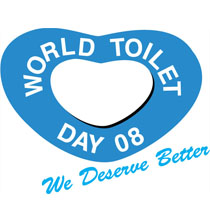
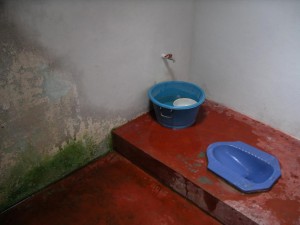
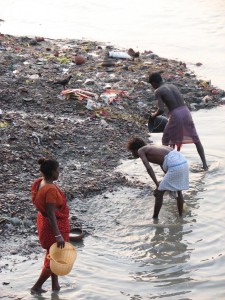
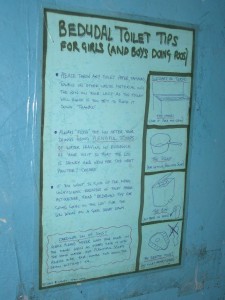
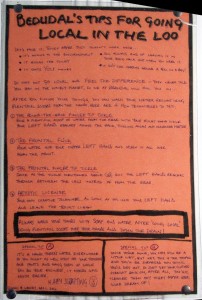

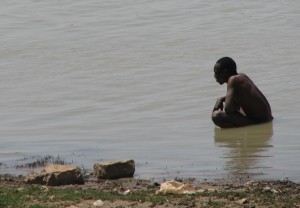

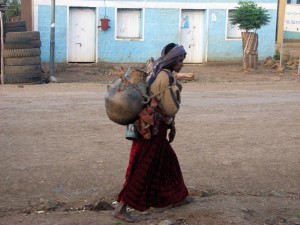
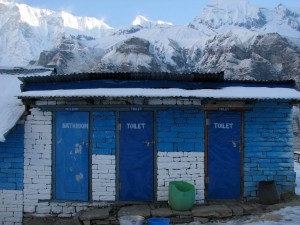
*gg* the world toilett day was also highly celebrated by a lot of german toiletslaves.
I am not sure if this is a real german invention, but for some reason a lot of guys seek for beeing used as a so called human toilets, which is really comfortable and watersaving, as soon as one can deal with this feeling of disgust…
For sure not a service everybody can offer.
Wow. That’s an interpretation of World Toilet Day I hadn’t thought of.
hey Jonathan. Ok u r correct but there seems to be one problem though. We need to get western coz it comfortable and lesser of an ewww. Next, wiping ur ass with tissue is better only if tissue were ummm.. Damp or wet. Lets see, u got ass hair, u got wrinkley skin on ass. So shit is gonna get trapped between and no way dry paper is gonna eliminate it . U need liquids to actually make u feel as clean as though u landed from heaven. People who wipe their ass if they go next to people who wash their ass even african or india will smell terribly.
Regards
Ohh ..World Toilet Day…! Yeah, let us “CELEBRATE IT” and
let us all “CELEBRATE” the U.S. Health Care System as well..!
Regards
Steven